Happy New Year to all of my readers on here; I hope you have an excellent & profitable 2023!
The first week of trading is in the books for the year, with most indexes showing investors’ reluctance to dive right into the markets.
Rather than break down the same issues we’ve been discussing for over a quarter now, let’s dive into some charts.
SPY, the SPDR S&P 500 ETF continued to trade in a sideways trend that began in mid-December 2022, with it’s only noticeable gain taking place on this past Friday (+2.29%).

While its MACD appears weakly bullish, their RSI has returned to neutral, which increases the likelihood of a near-term decline.
The next support levels are $385.06, $381.96, $377.73 & $374.77.
Should the last one be crossed bearishly, there will be downward momentum that after ~2% ($367.10) will see the lows of September & October 2022 retested.
QQQ, the Invesco QQQ Trust ETF that trades with the NASDAQ also was trading sideways to kick off the new year, with the most prominent day of gains taking place on Friday as well (+2.76%).
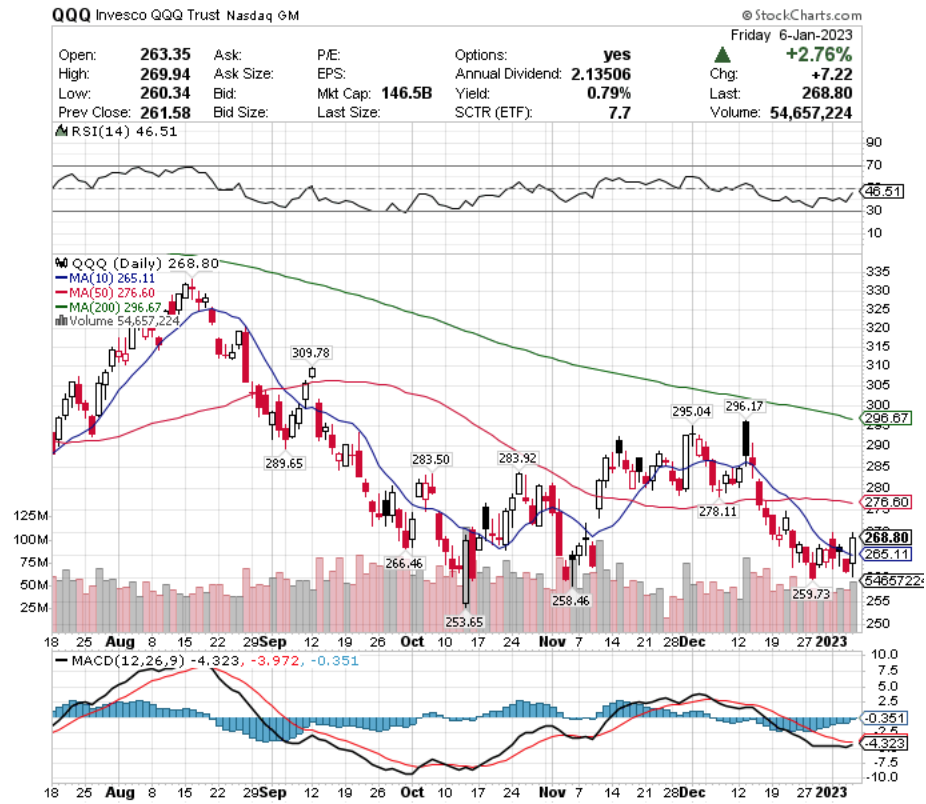
Given the sensitivity of the NASDAQ to interest rates, there looks to be more trouble ahead for NASDAQ names as the Federal Reserve has echoed that they are still not ready to begin pausing hikes, much less easing.
QQQ’s next support levels will be important, as after $266.46 & $265.11 are tested, the next support zone is in the $259.73-258.46 price levels, before their final low support level from October 2022 is to be tested.
Should the $253.65 level be broken, there looks to be a long way to go downwards before finding additional support.
IWM, the ProShares Russell 2000 ETF, which tracks the 2,000 smallest stocks in the Russell 3,000 faired similarly, with the only major upward movement of the week occurring on Friday (+2.25%).
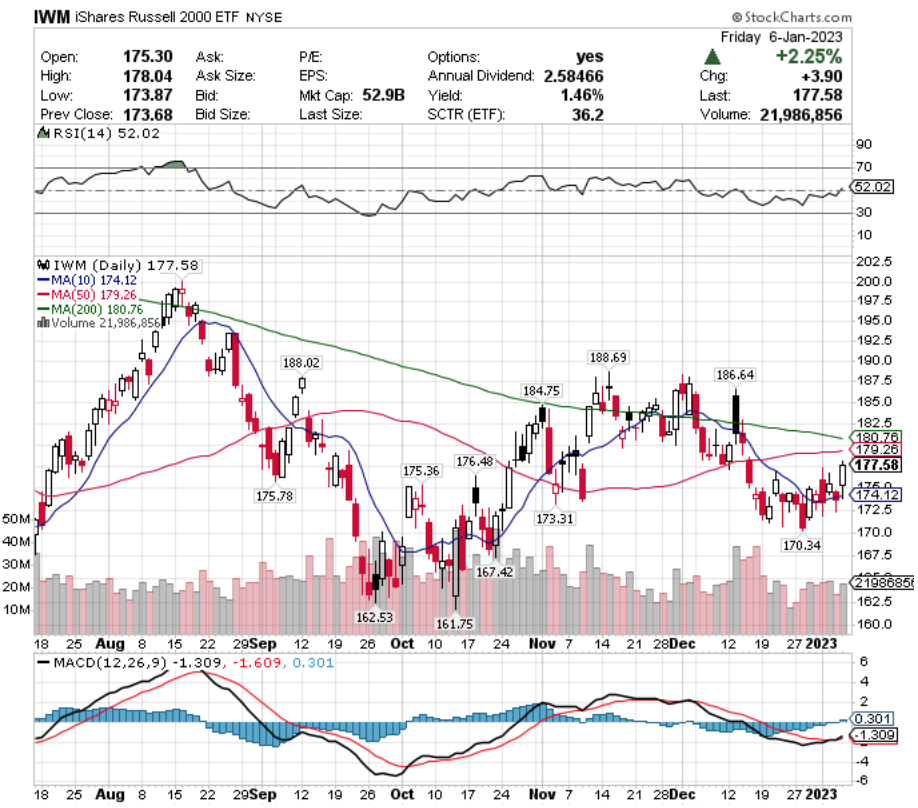
IWM has a support zone between the $176.48-$174.12 price levels, and more potential touch points on the way down than the former two ETFs.
Given where they currently stand, there is no upwards trend, so this does not look like an appealing time to enter any of the names above.
However, traders who us options as protective hedges have the opportunity to purchase them, collect their dividend yields, while also being able to profit from their additional near-term downward movements.
I will be looking to see how each of these indexes performs in the coming week(s), but the sluggish start to 2023 does not look promising for much growth in the mid-term, unless we see some major macro-headline developments.
Let’s take a closer look at some of the best & worst performing sectors & geo-locations by ETF!
Turkey (TUR), China (PGJ), Aerospace & Defense (DFEN) & Gold Miners (GDXJ) Are All Bullishly Leading The Pack
TUR, the iShares MSCI Turkey ETF has shown continued steady growth over the last year, rising 88%+ in that time period (excluding proceeds from their 2.01% dividend).
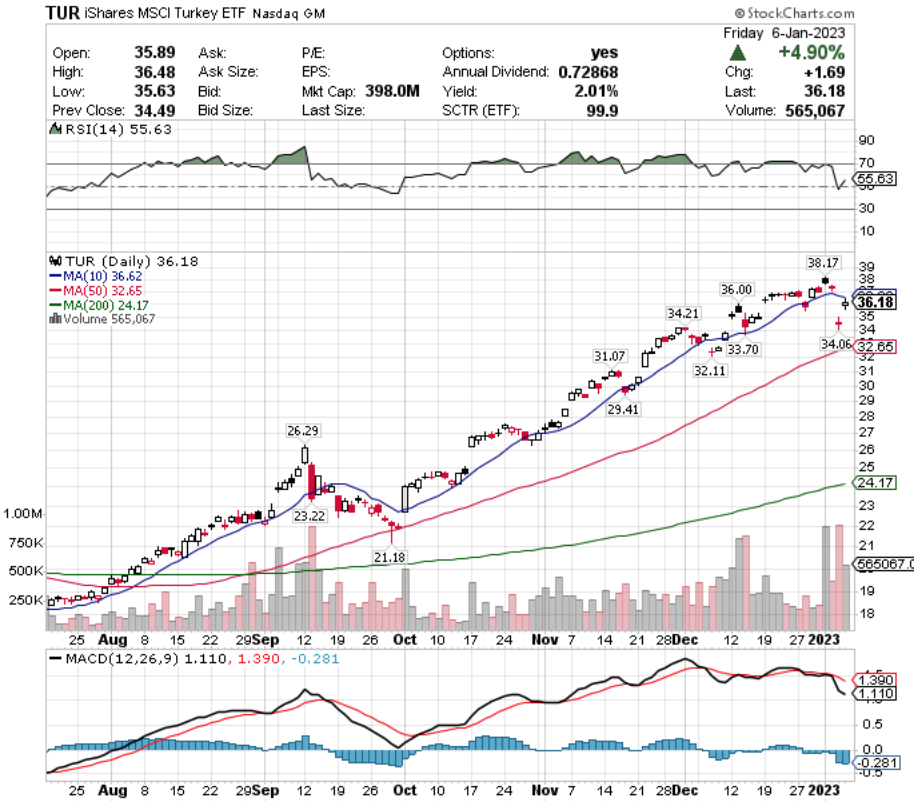
Their MACD is bearish & their RSI is bearishly approaching neutral after a long period of growth, signaling that there may be a cool off period on their horizon.
Given the number of gaps shown on their chart (6 months shown above), it looks best to wait & see what direction they end up moving in from here.
Traders looking to capitalize on their downside movements can buy in-the-money puts or sell out-of-the-money calls for additional income while they establish a price range.
PGJ, the Invesco Golden Dragon ETF has also performed well this year, rising ~85% since their low of late-October (excluding their 0.73% dividend).
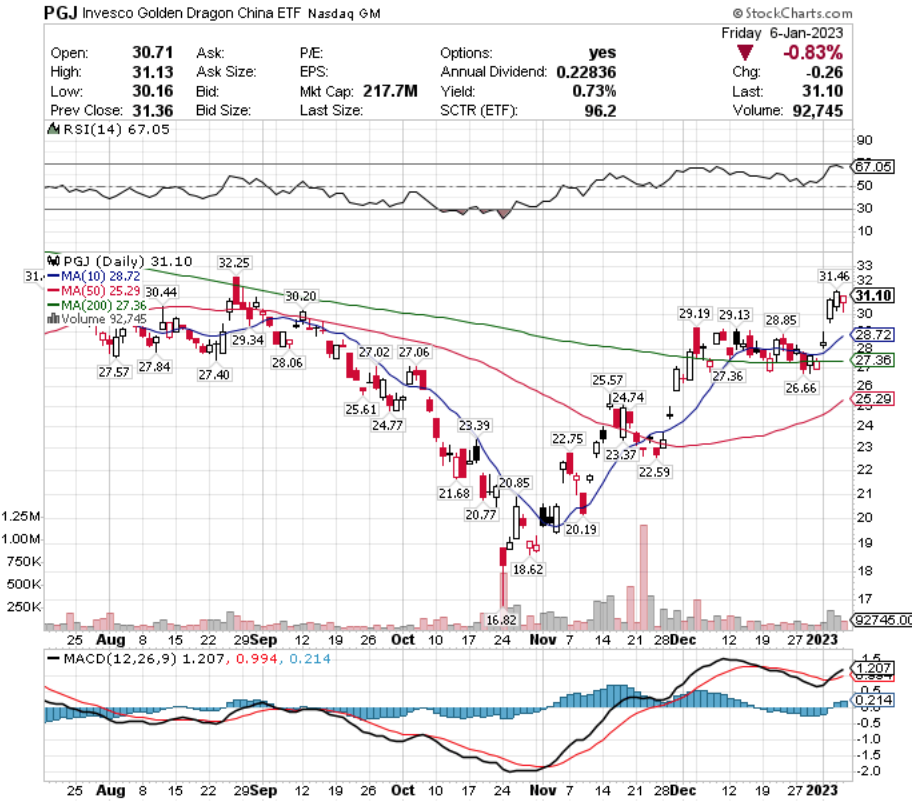
Much like TUR, they too have begun sputtering near their 52 week high & look ready to go test some of their support levels.
Investors may think to wait & see how they interact with their lower $29 support zone before entering a position ($29.34-29.13), as should they bearishly break through there, the $28 support levels are awfully spread out.
PGJ does have options, which savvy traders can use to their advantage while they wait to see which direction they move in later into the month.
DFEN, the Direxion Daily Aerospace & Defense Bull 3x Shares ETF has also had a strong year in terms of their recovery from the lows of October (+2.71% on the year, + 83.69% since September/October’s low, excluding their 0.44% dividend).
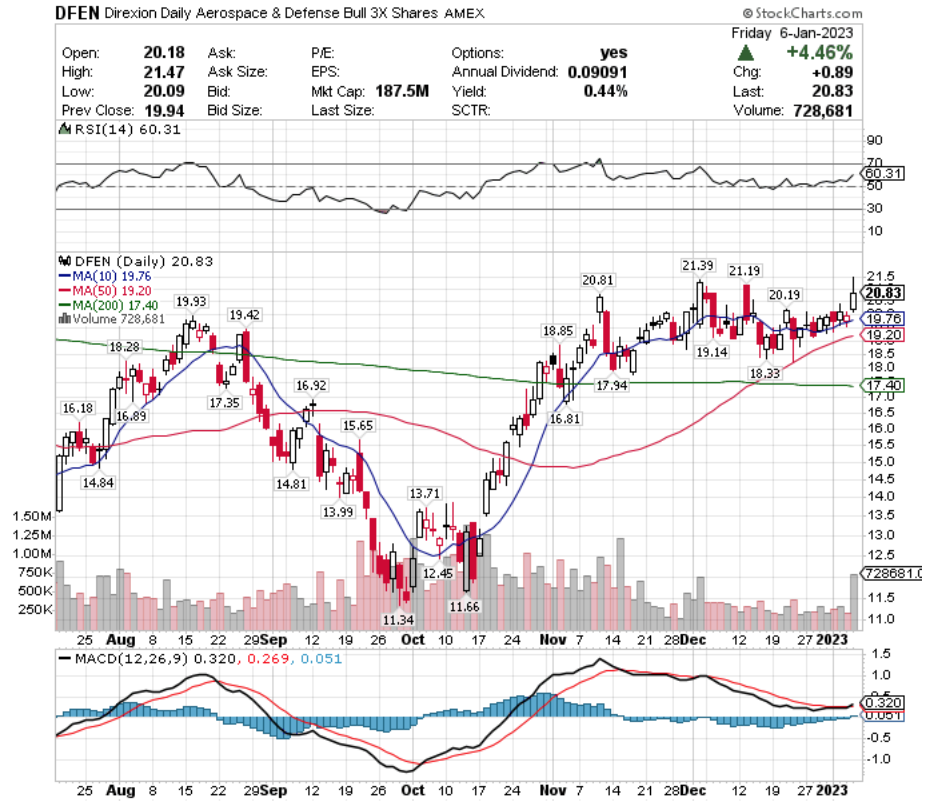
This name will require more attention to headlines, as there are bearish overall market catalysts that can be bullish for defense stocks.
Their $21.19 & $21.39 resistance levels are in focus in the coming weeks, while they have support at the $20.81 & $20.19 price levels.
As with most of the other names on today’s list, DFEN stock has options that can be used to profit from their performance while the market establishes where they are currently valued.
GDXJ, the VanEck Vectors Junior Gold Miners ETF has also had a year that was relatively flat (+1.49%), despite posting a ~54% gain from their lows established in October of 2022 (excluding gains from their 0.46% dividend).
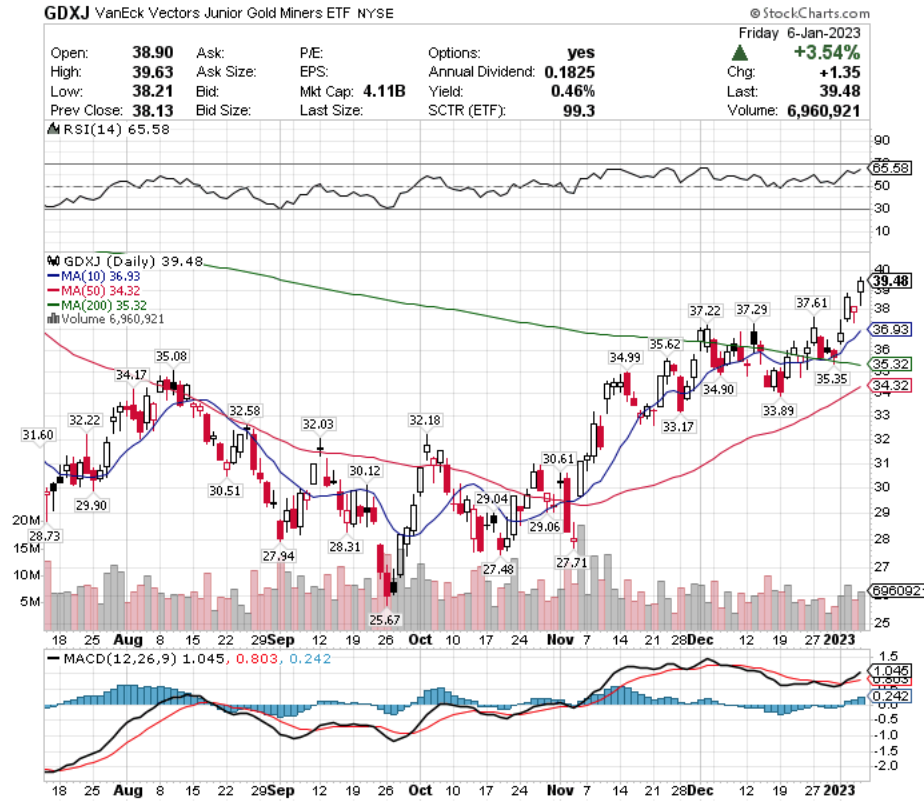
For the upside, look at the $41.02-41.40 price range, where resistance will have had to fill a gap up before reaching, and on the downside they have support at $38.27 & $37.29.
Cloud Computing (SKYY), Cannabis (CNBS), ARKK Innovation (ARKK) & Clean Energy (ACES) Are All Bearishly Lagging The Pack
SKYY, the First Trust Cloud Computing ETF has had a difficult year, falling -42% (excluding their 0.23% dividend) & resting atop their $55.01-$55.62 support range.

While their RSI is on the oversold side, their MACD is signaling that there looks to be a retest of the support mentioned above in the near-term.
CNBS, the Amplify Seymour Cannabis ETF has also had a difficult past year, losing ~61% of its value since the beginning of 2022.
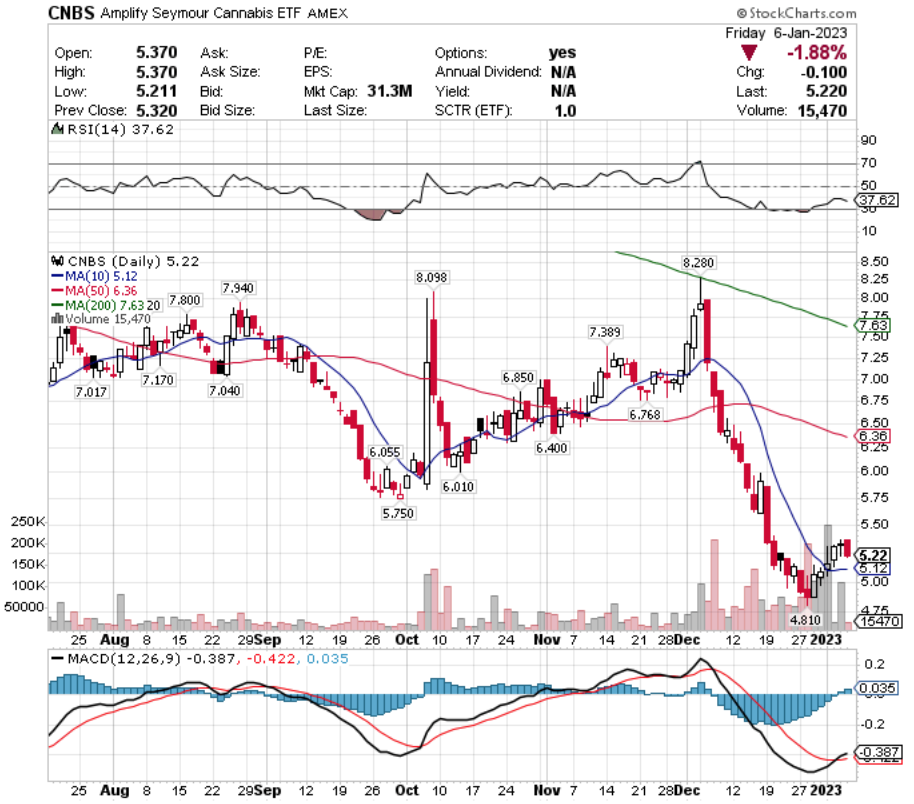
Their RSI is approaching oversold & they have only 2 support points ($5.12 & $4.81) from their current price level, with no dividend to offer investors a cushion.
CNBS will need additional time before being deemed at an ok level to invest in the long-term, but they do have options for traders looking to profit while they establish a new price level.
ARKK, the ARK Innovation ETF has also had a dismal year, losing 63% of its total value since the beginning of 2022.
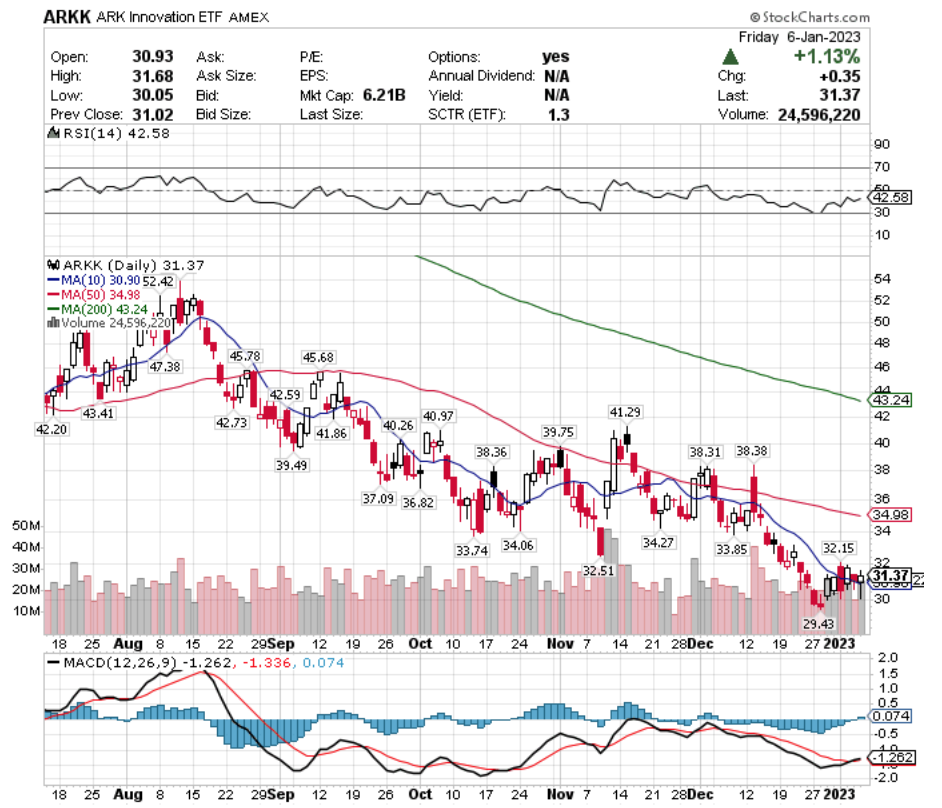
While those losses are to be expected based on the basket of names that the ETF contains, they do not offer a dividend, meaning that investors who purchased shares are in a tough place.
Their RSI is 42 & they have only 2 support levels beneath them currently ($30.90 & $29.43), signaling that there is likely more downward pain to come in the near-term.
While this isn’t a time to initiate a position just yet, there are opportunities for options traders to profit from them establishing a new price range.
ACES, the ALPS Clean Energy ETF has lost ~25% of its value over the past year (excluding their 1.09% dividend).
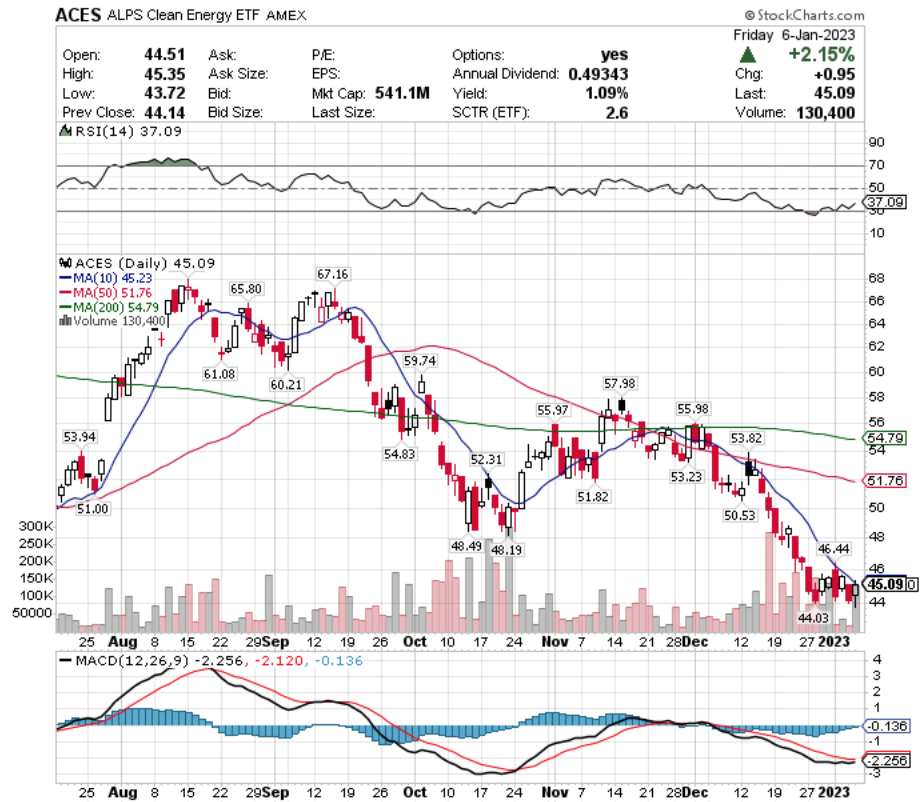
Much like the other bearish members of this article they have limited support levels left ($44.03) & they also have the most oversold RSI (37.09).
This does not appear to be a safe entry spot for creating a position, however options traders can profit from trading around them as they try to establish a new price range.
Tying It All Together
2022 was a volatile year for stocks & ETFs, with 2023 looking to start off on the same foot.
As investors search for safe places to put money in a rising rates environment opportunities have opened up in emerging markets, metals & energy, as well as defense names.
Names that are more speculative in nature, such as cannabis companies that are subject to more regulation uncertainty & technology companies that are heavily reliant on debt are feeling the pain of the past year’s interest rate hikes, along with the uncertainty of how far into 2023 the Fed will go before pausing increases.
Earnings calls this week should give some signal into where the economy is heading in the first half of the year, with many of the large US banks reporting on Friday 1/13/23.
There are also a number of Federal Reserve speakers set to speak throughout the week, which should also provide some clarity into the direction of where the markets are likely to head in 2023.
We will also learn more about NY Fed 1 & 5 year inflation expectations, consumer credit, the NFIB small-business index, revised wholesale inventories & CPI numbers this week.
Once we have more information from these reports & meetings there will be more information to begin combing through to figure out how price trends will behave in the coming year.
Best of luck in 2023!
*** I DO NOT OWN SHARES OF SPY, QQQ, IWM, TUR, PGJ, DFEN, GDXJ, SKYY, CNBS, ARKK, or ACES AT THE TIME OF PUBLISHING THIS ARTICLE ***